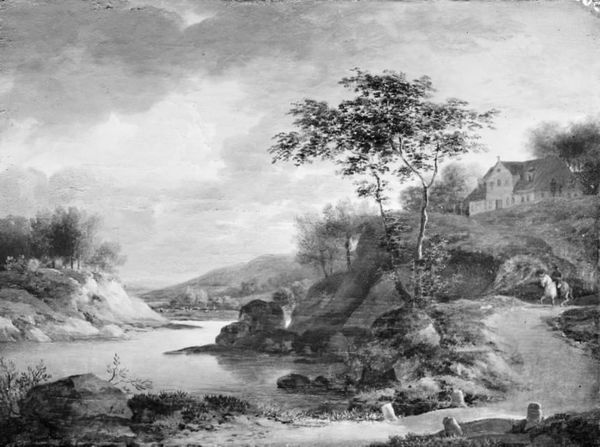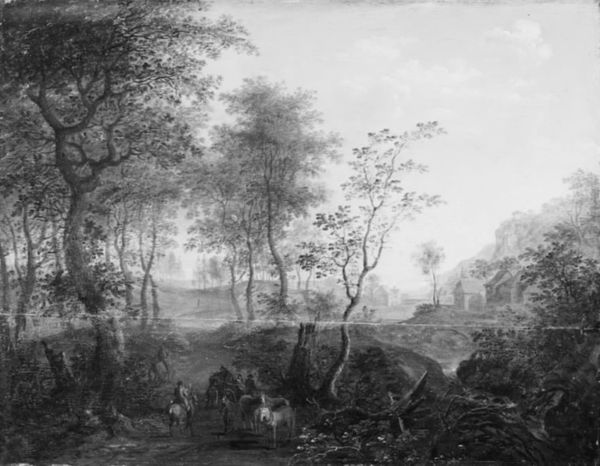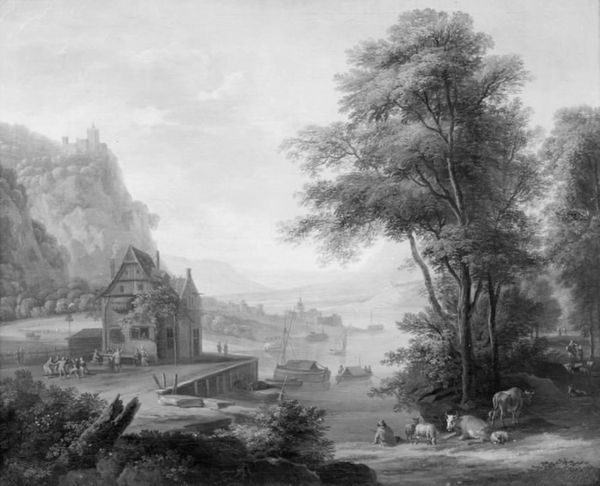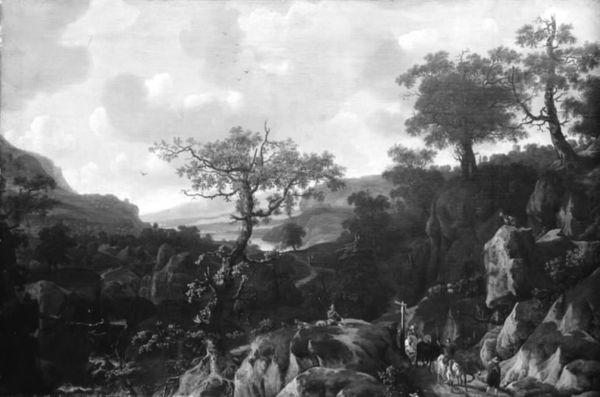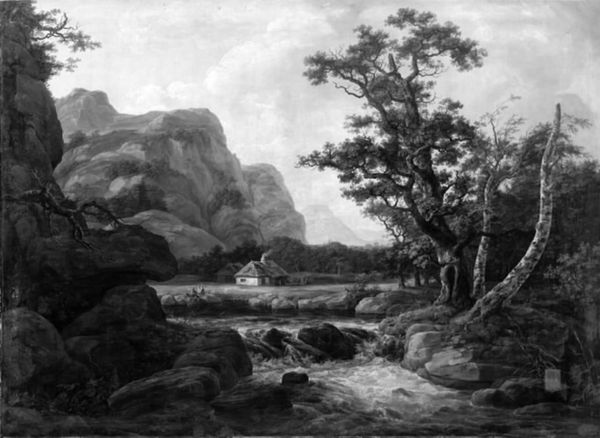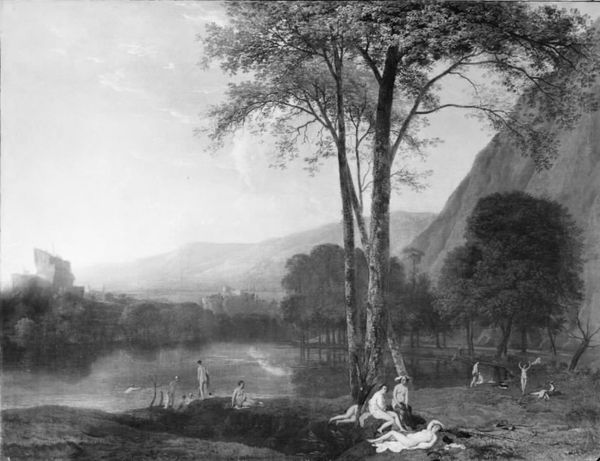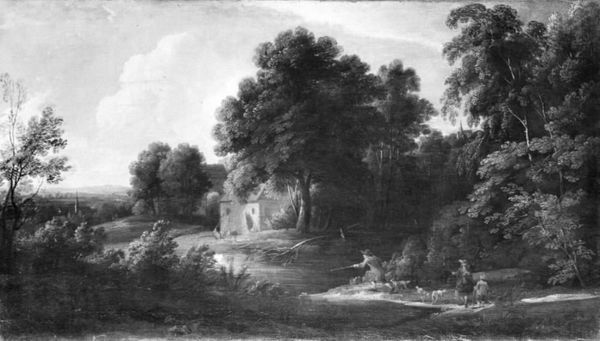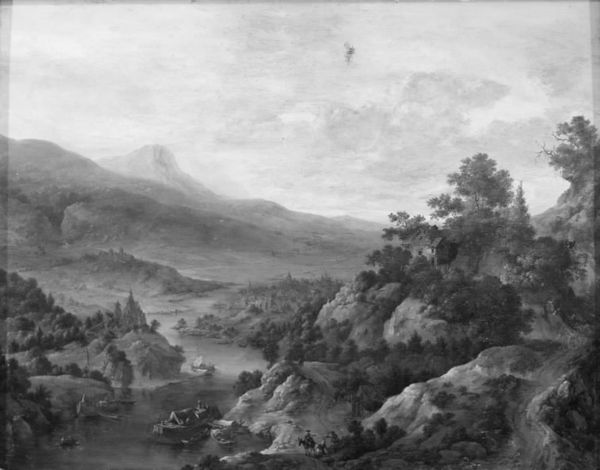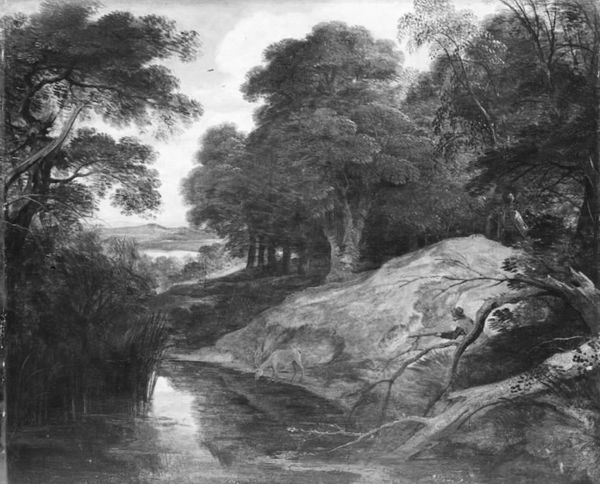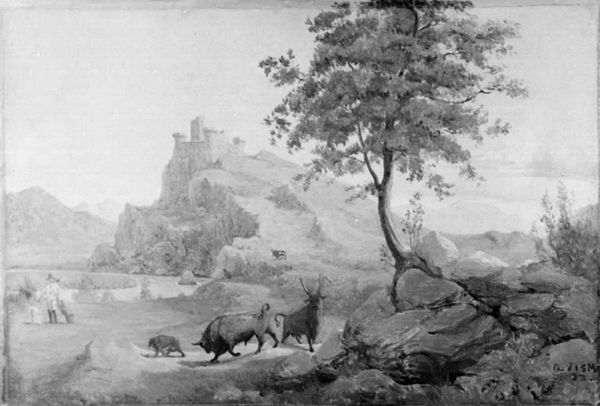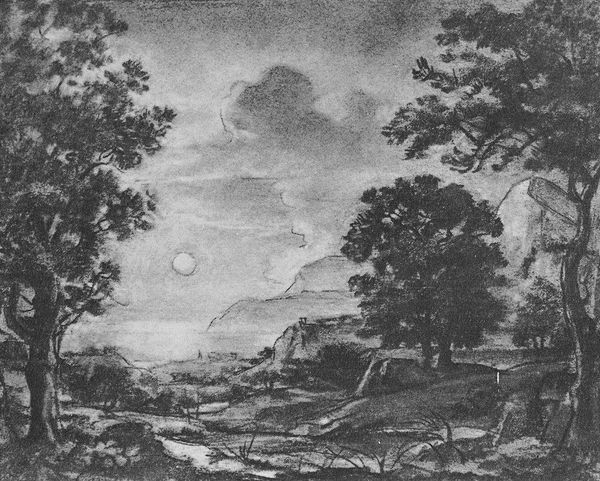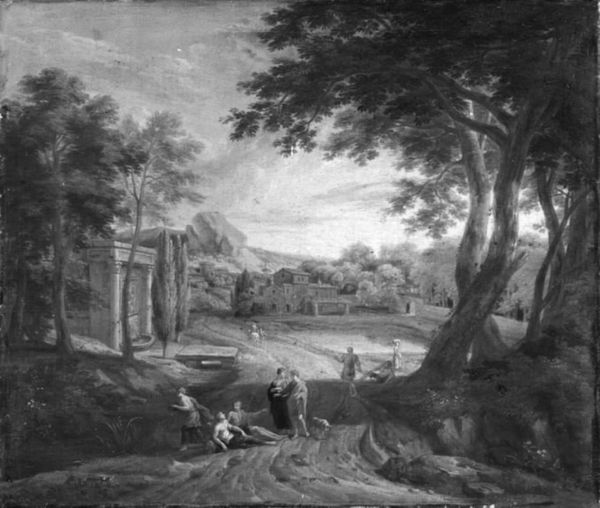
painting, oil-paint, canvas
#
baroque
#
painting
#
oil-paint
#
landscape
#
form
#
canvas
#
monochrome photography
#
monochrome
#
monochrome
Dimensions: 31.5 cm (height) x 37.8 cm (width) (Netto)
Curator: I’m struck immediately by the atmosphere here – a kind of hushed expectancy in this shaded, almost secretive, landscape. Editor: Yes, Johannes Glauber crafted this "Landscape" in oils on canvas, sometime between 1661 and 1726. It resides now here at the SMK, Statens Museum for Kunst. The composition seems deliberately stage-like. Curator: Precisely! It's as though the natural world is arranged as a backdrop for something, perhaps a myth unfolding, or a philosophical meditation. I am trying to decypher its symbolism. The darkness presses at the edges, with only those tiny figures at the bottom left barely catching the light. Editor: Given the timeframe and the Baroque style, we must think about landscape’s emerging role in reflecting social order. Country estates were visual demonstrations of power, wealth, and cultivation. Curator: That reading tracks. Though to me, it seems to move beyond simple representation. I keep returning to the tonal contrast: the weight of shadows against subtle hints of illumination. This evokes an entire inner world. Those figures, small as they are, embody our desire to find enlightenment within that shadowed space. Editor: And how was that inner life expressed outwardly, visually, through art? Patronage played a role. Who commissioned Glauber to make such a work, and for what purpose? Such grand landscapes become potent markers, less of a personal journey, more a sign of controlling not just land but perception. Curator: Yet I feel Glauber gives something back to the viewers by embedding psychological meaning within conventional themes. Doesn't the very darkness also stand for our unconscious feelings? Editor: The institution frames art, though. This canvas exists because it has been preserved, curated, collected. Landscape painting evolved parallel to the enclosures of land. We celebrate an ideal nature even as forces shaped and reshaped the real one outside gallery walls. Curator: All true and impossible to disregard. But while we consider the wider social impact, may we still let it cast its spell? Its emotional weight has certainly stayed with me. Editor: Agreed, seeing the interplay of light, shadow, and history here helps bring an appreciation for art’s enduring relevance. Let’s remember all the questions art holds for us in the present, too.
Comments
No comments
Be the first to comment and join the conversation on the ultimate creative platform.
